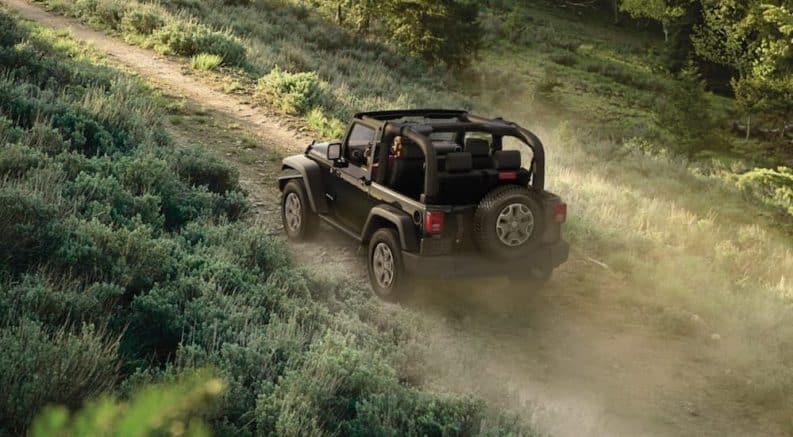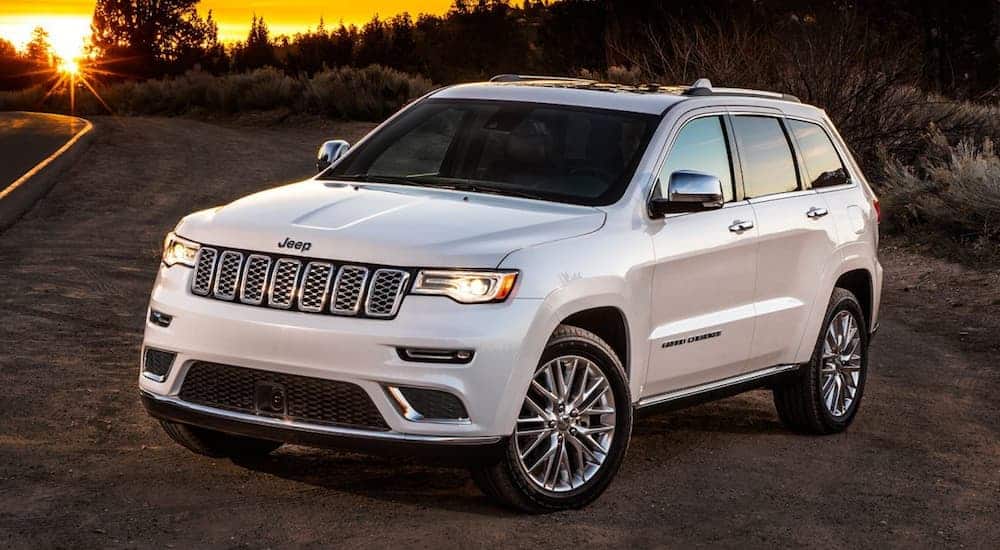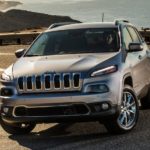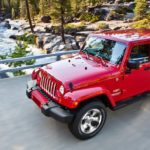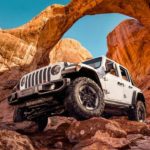Of all the vehicles on the American market, Jeep has produced some of the most unique and off-road capable vehicles since it started producing publically available models in the 1940s. Over the years, nearly 30 distinct Jeep models have been created, which means there are always plenty of used Jeeps for sale. But how does someone new to the Jeep scene figure out which used Jeep to purchase? It seems each model has its own devoted fanbase, as well as those who swear their preferred Jeep model is superior. Cruising the Jeep fan forums might be confusing for those who are looking to purchase their first Jeep, with conflicting opinions and a myriad of reviews for each model.
The good news is that there are some solid, fact-based, non-opinion-based things to look for when checking out the used Jeeps available for sale in your area. Just like any other make of vehicle, you’ll want to inspect the condition of your prospective new purchase, with a full inspection inside and out. As you start the process of shopping, bear in mind what you need out of your vehicle and don’t make an impulsive purchase because you see the Jeep name. Used Jeeps are just as cherished as new models, but make sure you’re investing in the right one!
How to Inspect a Used Jeep
As far as parts and pieces go, a used Jeep is no different than any other vehicle. It requires gas and oil, as well as regular maintenance and repairs throughout its life. The difference is that a Jeep can have a very long life span, regardless of its use on or off the road, depending on how it’s treated and cared for.
It’s true that off-roading causes extra wear and tear on vehicles. How could it not? Rocky, muddy terrain, water crossings, and sandy climbs all have an impact on a vehicle’s overall condition. At the same time, not every Jeep has the opportunity to enjoy extensive off-road adventures. While many fans contend that city Jeeps are the black sheep of the family, they do exist. When looking at a used Jeep for sale, it’s a good idea to find out how it has spent its life to date. Mileage can be very relative on a Jeep: low mileage on a Jeep that has spent its entire life climbing can result in an overall condition that’s very different from a higher mileage Jeep that has only seen paved roads.

But how can the average driver check? There are a few tell-tale signs that a Jeep has spent some serious time off the road. First, take a long look at the entire exterior, including the undercarriage. What is the level of rust on the undercarriage and frame? The older the Jeep, the more likely it is that there will be at least a little rust, but extensive rust damage can be one of the most destructive forces, and it’s definitely the most expensive to fix.
Next, check the windshield, the windshield frame, brackets, hood, and fenders. If the vehicle has been off-roading at all, it’s practically impossible to expect it to be in a perfect condition. There will be some dents and dings for sure. The important thing to check for is large chips and rust, as this could be indicative of even more extensive issues that are hidden by the existing paint. If you’re looking at this particular Jeep as a possible restoration, this may not bother you, but for those looking for a used Jeep that’s expedition-ready, you’ll want to pass on a vehicle that has extensive rust or chips.
Next, it’s time to check under the hood. The seller should have maintenance and repair records, but there are situations in which that information has been lost to time. Focus on the engine and transmission in your inspection, as these are good indicators of the overall mechanical status of the Jeep. Again, if you’re mechanically inclined, a dusty, rusty situation under the hood might be exactly what you’re looking for, but those who want to drive away today should look for a clean, functioning Jeep.
When test driving the Jeep, there are a few things to bear in mind. Some models have a natural ticking noise, but if that noise is loud or excessive, that could be a sign of a problem. Additionally, Jeeps have a ride that has been described as “harsh” or “stiff,” but it shouldn’t creak or cause you major discomfort when going over regular road bumps. The steering wheel shouldn’t vibrate, and turning corners shouldn’t require jerking or excessive effort.
The Unibody Difference
Some Jeeps, including the Grand Cherokee models (which will be identified as ZJ, WJ, or WK), Liberty, Compass, and Patriots, are built with unibody construction, while Wrangler models are built with a body-on-frame ladder construction. But what exactly does this mean?
There are three types of vehicle construction: unibody, body-on-frame, and sub-frame. Unibody essentially means that the body and the frame are structurally one and the same. This can be a benefit in several ways. Since there’s no separate frame, unibody frames are considerably lighter than their counterparts, which translates into better fuel economy. Generally speaking, unibody frames allow for more interior flexibility, leaving more room for passengers and cargo.
There is some argument as to whether a unibody or body-on-frame design creates the best off-road experience; in fact, this is one of the most divisive subjects for Jeep fans. There are pros and cons to each body type naturally. While the rigidity of the body-on-frame is cherished for its durability while off-roading, unibody frames are often associated with speed, fuel economy, and better crash ratings. When looking at used Jeeps for sale, it’s important to note any unibody structural compromises, as a small crack could turn into a huge issue very quickly.
Which Jeep Is Right for Me?
Again, there are nearly 30 different Jeep models in existence, so the market is going to be pretty diverse. On top of that, Jeeps are some of the most customized vehicles in the world, which means the likelihood of finding two exactly identical used Jeeps is going to be nearly impossible.
One question that many drivers new to the brand ask is, “what’s the difference between Cherokee and Grand Cherokee?” Some sellers use these terms interchangeably, and in most cases, this is simply a case of not knowing that these are two different models, rather than some nefarious attempt at misleading a prospective buyer.
The first noticeable difference is that the Grand Cherokee is larger in every way. It’s wider, taller, longer, and has a larger wheelbase. That translates into a more spacious interior, with around 68 cubic feet of maximum cargo space, compared to Cherokee’s 54 cubic feet.
The Grand Cherokee also offers more powerful engine options. For example, the base engine on the 2019 Grand Cherokee was a 3.6L V6 engine that offers 295 horsepower and 260 lb-ft of torque, while the base engine on the 2019 Cherokee was a 2.4L four-cylinder engine that offers 180 horsepower and 171 lb-ft of torque.
When considering your ideal used Jeep, take the following into consideration before taking the plunge:
- How many passengers will you regularly have?
- Will you need room for a child car safety seat?
- How much off-roading will you be doing?
- Will you need the ability to tow?
- What type of fuel budget do you have?
Do you want a soft top option, or do you prefer a hard top?
While nearly all modern Jeep models have the ability to handle some off-roading, certain Jeeps are more pre-disposed to rugged terrain. In the same vein, some Jeeps, like the Cherokee and Grand Cherokee, are very comfortable on city streets. If you have young children as passengers regularly, a two-seater soft-top might not be the best choice for your daily driver. By keeping these considerations in mind, you’ll be able to narrow down the field of used Jeeps for sale to those that best fit your needs.
Shopping for a Used Jeep
If you’re shopping for your first Jeep, starting with a used model is a great way to become acquainted with the brand. Just be sure to take your time evaluating the condition of the vehicle, inside and out, and be sure to take a test drive to make sure it handles correctly. There are also plenty of differences to consider between various Jeep models, including construction, as well as the various models and options. When buying a used Jeep, be sure to get all the information on the model, trim package, modification, and options in order to be sure you’re getting the best vehicle for your lifestyle and your budget.

